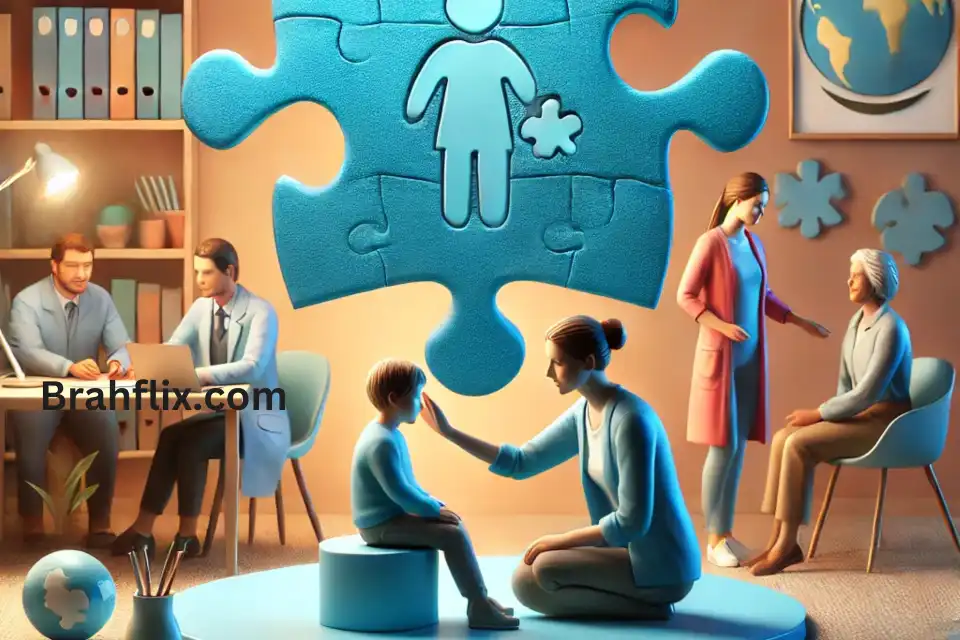Introduction
Autism, also referred to as Autism Spectrum Disorder (ASD), is a developmental condition that affects how individuals perceive the world and interact with others. It is marked by challenges in communication, social skills, and repetitive behaviors. As awareness of autism grows, it’s essential to understand its characteristics and how best to support those affected by it.
In this article, we’ll explore the nuances of autism, including its symptoms, causes, and strategies to support individuals on the spectrum. We’ll also delve into the importance of early diagnosis and the variety of therapies available.
Key Takeaways:
- Autism is a complex neurodevelopmental disorder with varying symptoms and degrees of severity.
- Early diagnosis and intervention are critical for improving outcomes.
- Support systems such as behavioral therapy, speech therapy, and educational accommodations can greatly enhance the lives of individuals with autism.
- Understanding autism promotes inclusion and helps create a supportive environment for those affected.
1. What is Autism?
Autism Spectrum Disorder (ASD) is a broad term that encompasses a range of neurodevelopmental conditions. The term “spectrum” reflects the wide variation in challenges and strengths possessed by each person with autism. Some individuals may have severe difficulties with communication and behavior, while others may exhibit mild symptoms.
Autism affects approximately 1 in 54 children in the United States, according to the Centers for Disease Control and Prevention (CDC). The condition is present from early childhood and persists throughout a person’s life, although its symptoms may evolve over time.
Key Characteristics of Autism:
- Difficulties in social communication
- Repetitive behaviors or interests
- Sensory sensitivities (e.g., being overly sensitive to sounds, lights, or textures)
2. Signs and Symptoms of Autism
The signs of autism typically appear during early childhood, often before the age of three. However, some children may not display noticeable symptoms until later. The symptoms vary widely from individual to individual, but they generally fall into two main categories: communication and behavior.
Social Communication Symptoms:
- Difficulty making eye contact
- Delayed speech development or lack of speech
- Difficulty understanding or responding to social cues
- Struggling to understand other people’s emotions or express their own
Repetitive Behaviors and Restricted Interests:
- Repetitive movements like hand-flapping or rocking
- Intense focus on specific topics or objects
- Resistance to changes in routine
- Sensory sensitivities (e.g., being easily upset by loud noises or bright lights)
3. What Causes Autism?

The cause of autism is not fully understood, though research points to a combination of genetic and environmental factors. Studies show that genetics play a major role in the development of autism, as the condition tends to run in families. However, no single gene has been pinpointed as the sole cause of ASD.
Environmental Factors:
- Prenatal exposure to certain chemicals or medications
- Complications during pregnancy or birth
- Advanced parental age at the time of conception
While these factors may increase the risk of developing autism, they are not definitive causes, and ongoing research is aimed at uncovering more details.
4. How is Autism Diagnosed?
Diagnosing autism involves a thorough evaluation of a child’s behavior, communication, and developmental history. There is no single medical test for autism, such as a blood test or imaging scan. Instead, professionals use behavioral assessments and diagnostic tools such as the Autism Diagnostic Observation Schedule (ADOS).
Steps in Autism Diagnosis:
- Developmental Screening: Pediatricians monitor a child’s early development through regular checkups, assessing their motor, cognitive, and social skills.
- Comprehensive Diagnostic Evaluation: If developmental concerns are raised, a specialist (e.g., a developmental pediatrician or neurologist) will conduct more detailed assessments using standardized diagnostic criteria from the Diagnostic and Statistical Manual of Mental Disorders (DSM-5).
Early diagnosis is critical because it enables earlier interventions that can help mitigate the impact of autism on development.
5. Early Intervention and Therapies
Once autism is diagnosed, early intervention plays a key role in supporting a child’s development. Research shows that children who receive early treatment tend to have better long-term outcomes in communication, social interaction, and independent living.
Common Autism Therapies:
- Applied Behavior Analysis (ABA): A widely used approach focusing on reinforcing positive behaviors and reducing undesirable ones.
- Speech Therapy: Helps children develop communication skills, from learning to speak to understanding non-verbal cues.
- Occupational Therapy (OT): Supports children in gaining essential life skills, such as dressing, feeding, and other tasks that promote independence.
These therapies are often customized to suit an individual’s specific needs, ensuring they receive personalized support for their development.
6. Supporting Individuals with Autism
Providing support for individuals with autism involves understanding their unique strengths and challenges. Creating an environment that encourages inclusion and fosters growth is essential.
Tips for Supporting Someone with Autism:
- Be patient and allow extra time for communication.
- Use clear, simple language and avoid sarcasm, which may be difficult for them to understand.
- Respect sensory sensitivities by minimizing overwhelming stimuli (e.g., bright lights, loud noises).
- Encourage participation in structured routines, as predictability helps reduce anxiety.
By incorporating these strategies into daily interactions, you can help an individual with autism navigate the world more comfortably.
7. Education and Autism
Children with autism often benefit from individualized education plans (IEPs) tailored to their specific learning needs. Educational accommodations can include additional support, such as one-on-one instruction or specialized classroom environments.
Effective Strategies for Educators:
- Use visual aids and concrete examples to explain concepts.
- Break tasks into smaller, manageable steps.
- Provide a structured routine to create a sense of security in the classroom.
Collaboration between parents, educators, and therapists is key to creating a supportive learning environment for students on the autism spectrum.
8. Adults with Autism: Challenges and Opportunities
While much of the focus on autism is centered around children, it’s important to recognize that autism affects individuals throughout their lifespan. Many adults with autism face challenges related to employment, relationships, and independent living.
Common Challenges for Adults with Autism:
- Difficulty securing employment due to a lack of social skills or job-related anxiety
- Challenges in forming and maintaining relationships
- Sensory sensitivities that affect day-to-day activities
However, with the right support, adults with autism can lead fulfilling, productive lives. Vocational training and life skills coaching can assist in navigating these challenges.
9. Frequently Asked Questions About Autism
1. Can autism be cured?
No, autism is a lifelong condition, but early intervention and support can significantly improve quality of life.
2. What causes autism?
Autism is caused by a combination of genetic and environmental factors, though the exact cause remains unknown.
3. How can I support someone with autism?
Be patient, use clear communication, and respect sensory sensitivities. Encourage a structured and predictable environment.
4. Is autism more common in boys or girls?
Autism is more frequently diagnosed in boys than girls, though some researchers believe that it may be underdiagnosed in females.
5. Are vaccines linked to autism?
No, extensive research has found no link between vaccines and autism.
Conclusion
Autism is a complex and multifaceted condition that affects millions of individuals worldwide. By fostering greater understanding, we can provide better support and help individuals with autism thrive in all aspects of life. Whether through early intervention, specialized education, or adult support programs, the key is to recognize the unique strengths and challenges of those on the spectrum.
What strategies have you found most effective in supporting someone with autism? Share your thoughts and experiences in the comments! Be sure to explore our other articles on neurodevelopmental disorders and inclusive education to learn more.


